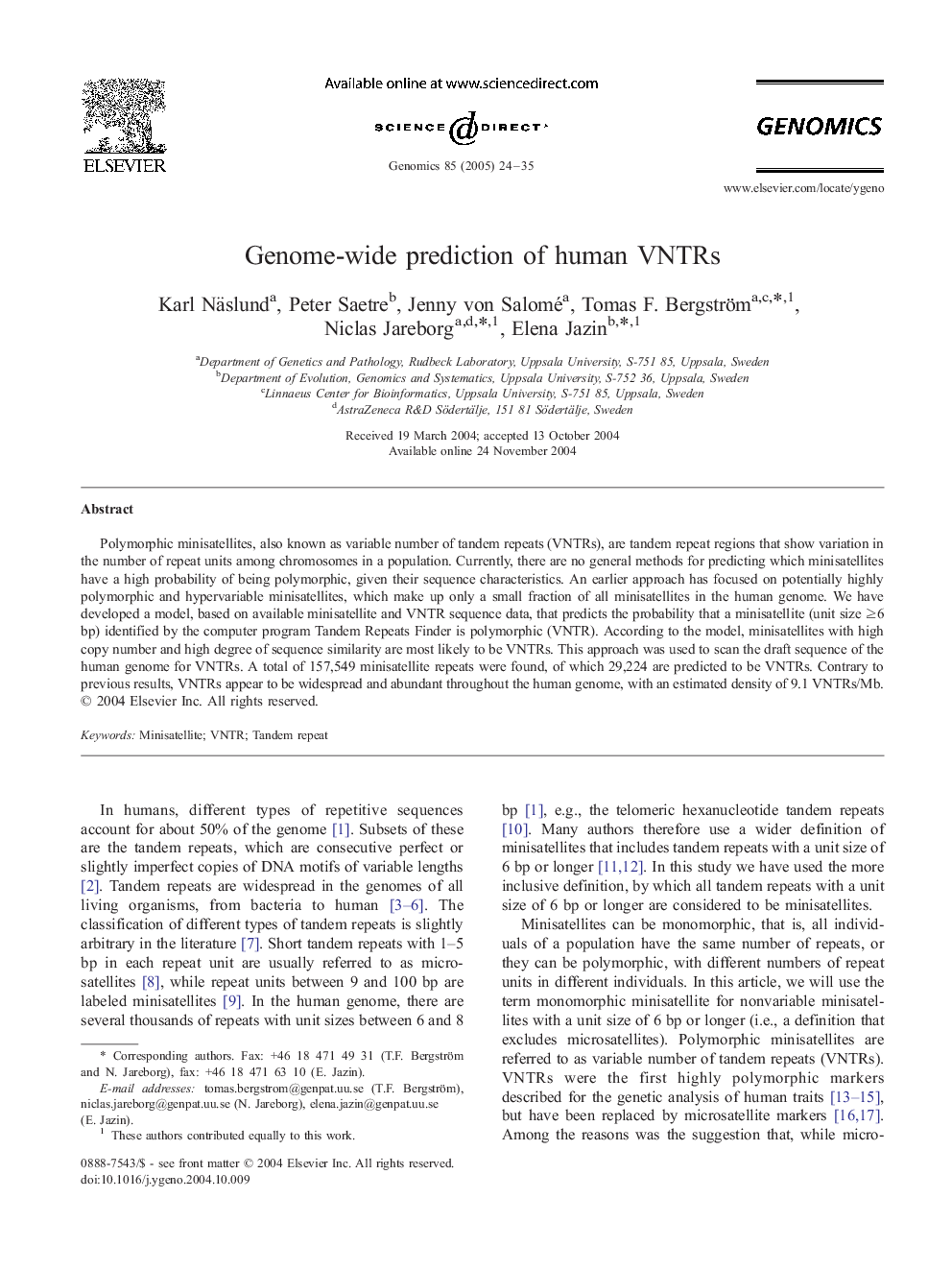| Article ID | Journal | Published Year | Pages | File Type |
|---|---|---|---|---|
| 9131912 | Genomics | 2005 | 12 Pages |
Abstract
Polymorphic minisatellites, also known as variable number of tandem repeats (VNTRs), are tandem repeat regions that show variation in the number of repeat units among chromosomes in a population. Currently, there are no general methods for predicting which minisatellites have a high probability of being polymorphic, given their sequence characteristics. An earlier approach has focused on potentially highly polymorphic and hypervariable minisatellites, which make up only a small fraction of all minisatellites in the human genome. We have developed a model, based on available minisatellite and VNTR sequence data, that predicts the probability that a minisatellite (unit size â¥6 bp) identified by the computer program Tandem Repeats Finder is polymorphic (VNTR). According to the model, minisatellites with high copy number and high degree of sequence similarity are most likely to be VNTRs. This approach was used to scan the draft sequence of the human genome for VNTRs. A total of 157,549 minisatellite repeats were found, of which 29,224 are predicted to be VNTRs. Contrary to previous results, VNTRs appear to be widespread and abundant throughout the human genome, with an estimated density of 9.1 VNTRs/Mb.
Keywords
Related Topics
Life Sciences
Biochemistry, Genetics and Molecular Biology
Genetics
Authors
Karl Näslund, Peter Saetre, Jenny von Salomé, Tomas F. Bergström, Niclas Jareborg, Elena Jazin,
